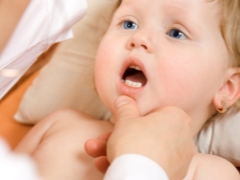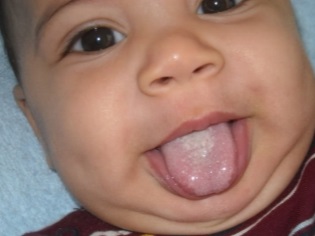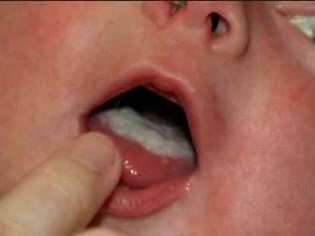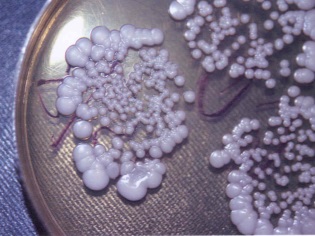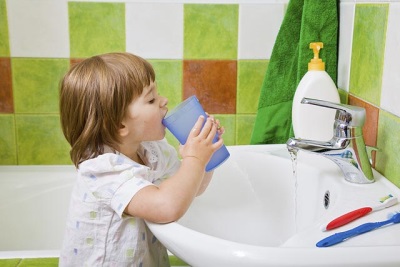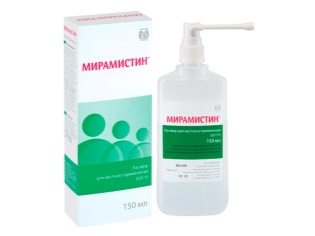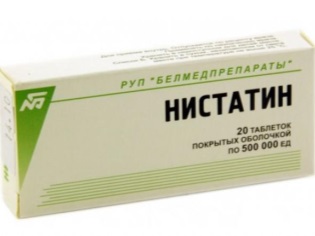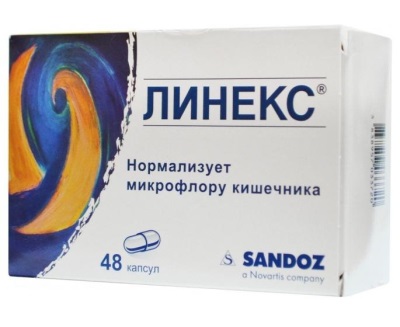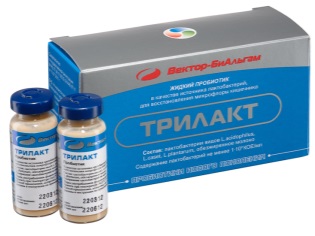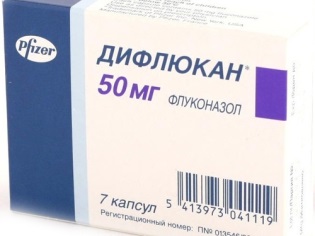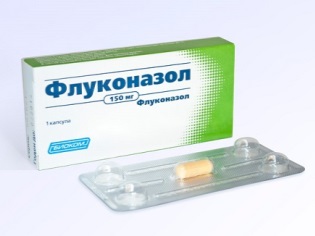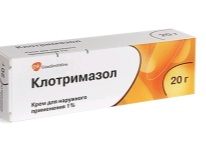Thrush in a child after taking antibiotics
After the child has been treated with antibiotics, and the illness is defeated, it seems that the most unpleasant is over. However, antibiotics are not vitamins, they are not so harmless. Effectively destroying harmful bacteria, antibiotics extend their "killer" effect on beneficial microorganisms that are necessary for the normal functioning of human organs and systems.
As a result, a baby treated with antibacterial drugs may begin to suffer other problems associated with the dysbacteriosis that has arisen. One of these "side" troubles - the so-called thrush.
On the Internet, dear mothers and fathers, you may find information that modern broad-spectrum antibiotics do not cause similar effects. This is not true. More precisely, not quite. The latest generation of antibiotics cause dysbacteriosis, only less pronounced than when taking more ancient antibacterial drugs.
What it is?
In scientific terms, thrush is called "candidiasis." This disease is provoked by the yeast-like fungi of the candida family. Almost all healthy people have such fungi in the body, they live in the mouth, in the large intestine and in the vagina. After taking antibiotics, the child’s immunity is weak; this is the first factor for active growth and reproduction of fungi. The second is a common dysbacteriosis, against which the yeast feels fine.
Child candidiasis it can appear anywhere - in the oral cavity, on smooth skin, in the intestine (in severe forms of dysbiosis), as well as in the vagina in girls.
Symptoms of thrush:
- In the mouth - white or yellowish bloom on the cheeks, tongue, inside of the lips.
- In the vagina - itching and burning, whitish discharge with a sour smell.
- In the intestine - increased gas formation, diarrhea, in the feces of the child can be discerned white flakes.
The intestinal form of thrush is considered the most dangerous for children. because they begin to lose weight, fall behind in growth, lose diarrhea nutrients, vitamins.
How to treat thrush for Dr. Komarovsky, see the video:
How and what to treat?
So, you have discovered that your child has thrush that appeared after antibiotic treatment. If candidiasis occurs in the oral cavity, treatment will be the most simple and short-lived. However, if you do not take it on time, the consequences can be quite severe - candidal stomatitis (that's exactly what doctors call thrush in the mouth) most likely will cause the occurrence sore throats. And then again it is necessary to treat the child with antibiotics.
An infant can be treated with a soda solution (1 teaspoon of regular soda per cup of warm water). Carefully wipe cheeks, gums, tongue. Similarly, you can use a weak solution of potassium permanganate.
Special antifungal medications at this age try not to prescribe babies, but do not hesitate; local treatment in the treatment of thrush in a child’s mouth gives excellent results.
Babies from 6 months can take antifungal agents. But do not set up experiments and select the drugs yourself. Prescribe medication, as well as determine the duration of treatment can only a doctor.
Treatment will be combined.For local processing, you can use all the same soda solution or a solution of potassium permanganate. You can also use "Miramistin". This antiseptic is non-toxic, and in the form of a spray is perfect for sprinkling cheeks, tongue and gums. But it is better to carry out such treatment immediately after pre-cleaning the oral cavity with soda solution.
«NystatinIt is better to take along with antibiotics to minimize dysbacteriosis. But it is used as an independent tool for the treatment of thrush. For the treatment of thrush in the mouth, choose a tablet form of the drug. The dosage and duration of the course will be prescribed by the doctor, based on the severity of candidiasis.
«Holisal"Not only perfectly treats wounds and sores in the mouth for thrush, but also anesthesia, because it has a pronounced anesthetic effect. "Cholisal" in the form of a gel should be applied before meals, to reduce discomfort during chewing, as well as immediately after eating, but not more than 4 times a day.
In addition to local treatment, the doctor may prescribe drugs that restore the microflora - "Linex», «Bifiform», «Bifidumbacterin", or "Trilact».
Treatment of thrush in the intestines will be more time consuming. The main role in it will be played by drugs that normalize the natural flora, allowing useful microorganisms to grow and develop:
«Linex". This probiotic is available in capsule form. Contains live bacteria, which should eventually "colonize" the child's intestines. For children under 3 years old, the contents of the capsule, previously poured out, can be mixed into the drink. And older guys are given a capsule entirely. For children from 0 to 2 years old, the contents of 1 capsule are divided into three doses per day; from 2 to 12 years old, children can be given 1-2 capsules per day; for adolescents, as well as adults, 2 capsules three times per day.
«Bifidumbacterin". This drug, saturated with live bifidobacteria, can be in different forms. The pharmacy will offer you dry matter in vials, medication in ampoules, vaginal suppositories, sachets of powder, as well as in capsules or liquid concentrate. Focus on your own convenience and ask your doctor for advice. According to parents, the most convenient to use is Bifidumbacterin liquid concentrate. It is taken orally, without first spreading or dissolving anything, for children under 1 year old - 1 ml each, from 1 to 3 years old - 2 ml on average, for children under 7 years old - 2-3 ml Also with a liquid "Bifidumbaktrin" do enemas, the proportion of the composition: 5 ml of the drug per 50 ml. water.
«Trilact". This probiotic is produced in the form of an emulsion. It should be taken exclusively inside the children who have reached the age of one and a half years. If the crumb is younger, the doctor will decide on the appointment of Trilakt and calculate the dosage. The initial dose for two years old children is 1.5 ml once a day before breakfast. A child aged 3 to 7 years old - 2.5 ml, from 7 to 12 years old - 3.5 ml. just once a day.
To treat thrush, which appeared in the vagina in girls or on the penis in boys while taking antibiotics, should also be combined. Probiotics are assigned to the child to restore order in the microflora. Local treatment in girls is carried out using vaginal candles "Bifidumbacterin", "Pimafucin" or "Fluconazole", Vaginal tablets"Levorin", Suspension"Diflucan". It is best to visit a pediatric gynecologist, who will select the appropriate tool based on the results of the smear. Boys can use antifungal ointment, the names of which will be prompted to you by the pediatrician.
Girls are recommended sessile baths with calendula or sage, you can also flush the baby with water with a decoction of chamomile. Irrigation of the vagina to the child before the introduction of candles or tablets should be carried out exclusively with the help of a catheter.
«Levorin". This antifungal drug in the form of tablets for vaginal administration should be used after external treatment with soda solution.The dosage is prescribed by the doctor. It directly depends on the patient's age. The course of treatment should last at least 2 weeks.
If thrush manifested on smooth skin, then most often it affects the armpits, folds on the hands and feet of the toddler. For the treatment of such candidiasis, antifungal ointments will suit you - "Pimafucin», «Candide», «Clotrimazole" and many others. The main thing to remember about an integrated approach is that you cannot cure thrush alone with an ointment; additional drugs are needed - tablets with antifungal action, probiotics, vitamins. In no case can they be selected independently. What to do, the doctor will tell in detail, who at the same time will calculate the dosage for your child and will tell you how many days the treatment should last.
In the process of dealing with thrush, you should not underestimate the importance of hygiene, because the disease is contagious, and if there are several children in your house, prevention comes to the fore.
Dr. Komarovsky strongly recommends that parents do a wet cleaning with a non-toxic disinfectant twice a day in the rooms where a child with thrush is located, air the rooms, and monitor the temperature. The room thermometer should not show above 22 degrees Celsius.
The full release of Dr. Evgeny Komarovsky’s program on fungal infections in children can be found in the video below:
